- Ridiculously cheap to run
- Bulletproof reputation
- Spacious interior
- No parking sensors on a $35K car?!
- Interior presentation depends on the spec you choose
- Hard to achieve claimed consumption
I’m going to be honest, I wanted to dislike the 2020 Toyota Corolla sedan when it was first revealed. Where the hatchback’s design has a sporty and sophisticated flavour, the sensibly-styled sedan looks primed for hire car life and a box of tissues on the parcel shelf. In all fairness, this is the first Corolla sedan to really feel related to the hatch since the ninth-generation model from 2000 and it’s all the better for it.
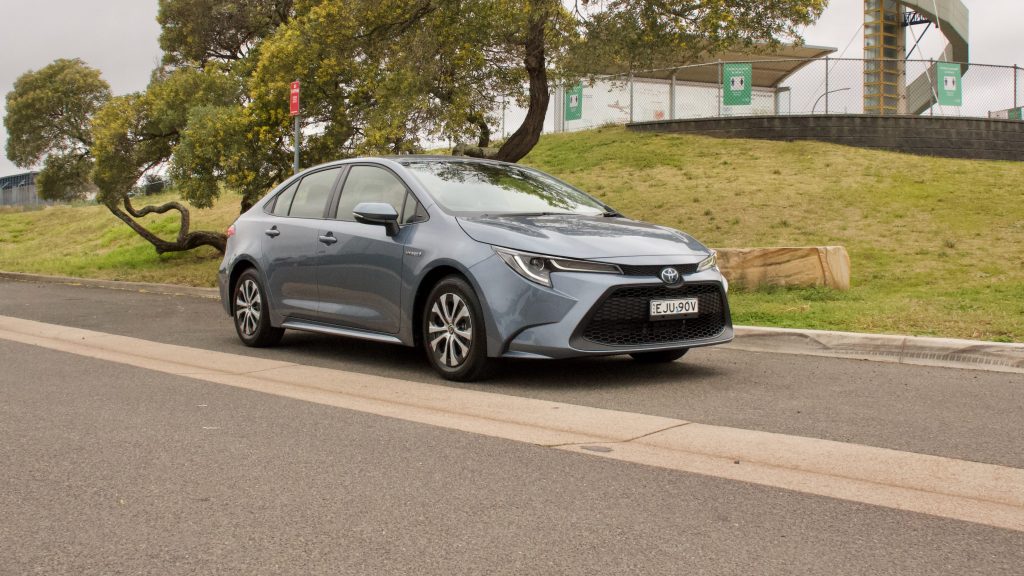
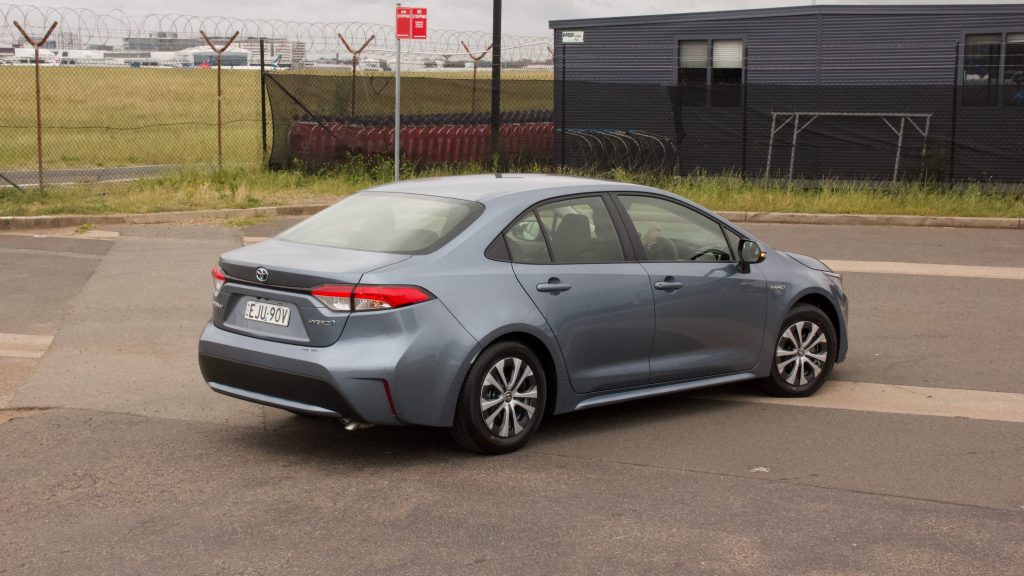
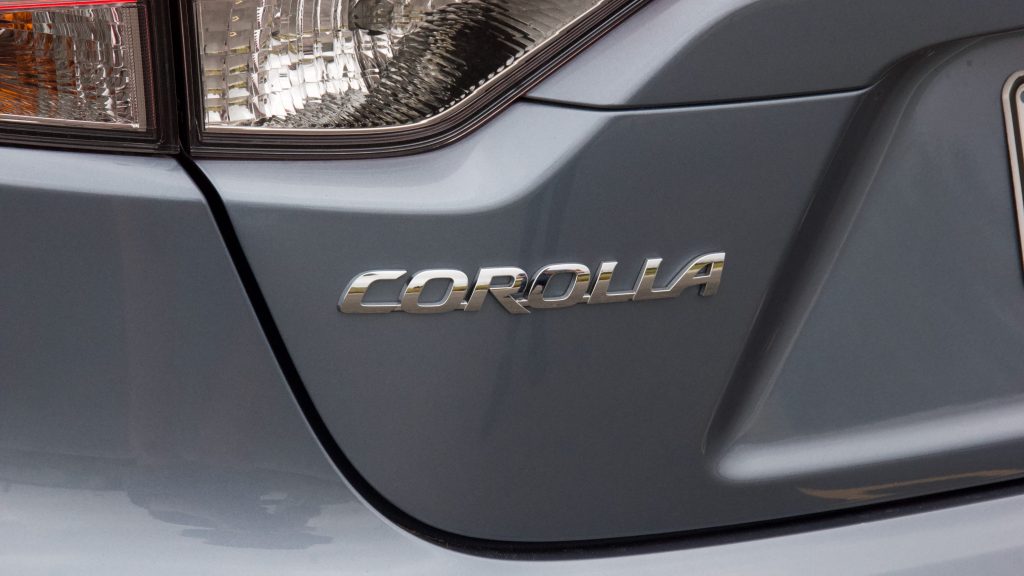
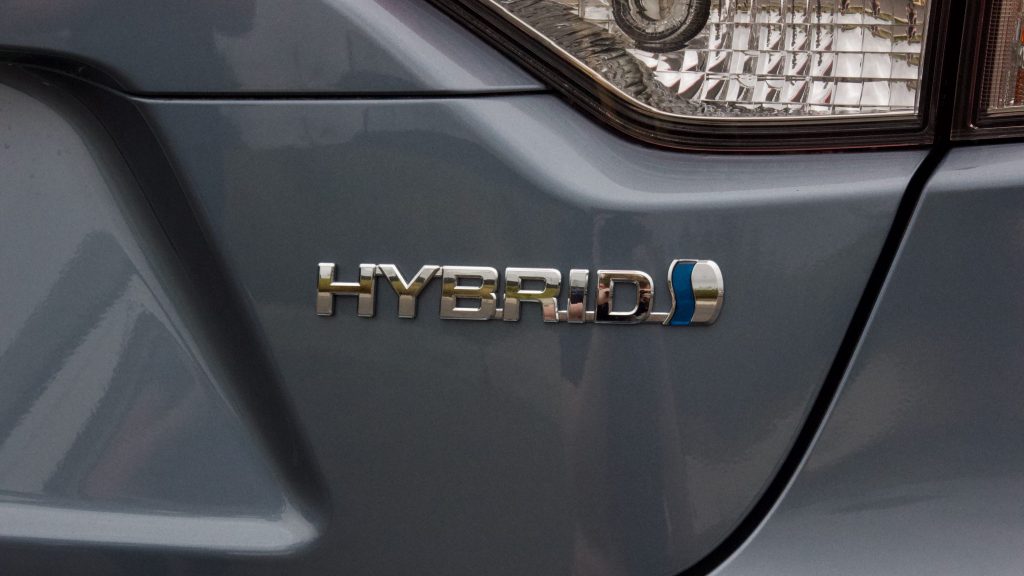
The sharp front-end styling from the hatch carries over, as does the well-presented interior. And, being based on Toyota’s excellent TNGA platform, the new model scores all of Toyota’s latest active safety technology and, for the first time in Australia, the sedan can be had with a hybrid powertrain.
Was I too quick to judge the humble three-box sedan? After all, it does make up for the Corolla hatchback’s tiny boot and the sedan’s slippery body means the hybrid sedan sips noticeably less, too. Could it be the Corolla to go for? Let’s find out.
Price & Specs: 7.0/10
The new Corolla hatch shook the Australian market in 2018 when it landed without the fleet-friendly Ascent grade, instead offering more active safety technology and a more complete ‘base’ model than any Corolla before it. The 2020 Toyota Corolla sedan follows the same basic formula, with the Ascent Sport petrol manual coming in at $23,335 before on roads before climbing the ladder all the way up to the ZR, at $33,635 before on roads. Curiously, the you can have a hybrid on the Ascent Sport and SX for $1,500 more than the petrol equivalents, but – unlike the hatchback – the ZR is a petrol-only affair.
As mentioned, all Corolla sedans come with Toyota’s full suite of active safety including autonomous emergency braking (AEB) with pedestrian and cyclist detection, road sign assist, active cruise control, lane-keeping assist, lane trace assist and automatic headlights (with no ‘off’ mode! Brilliant) with auto high beam. Also standard across the range are LED headlights and brake lights, a reversing camera hooked up to an 8.0-inch touchscreen, satellite navigation, Apple CarPlay and Android Auto, digital radio, a six-speaker audio system, an electronic handbrake and seven airbags.
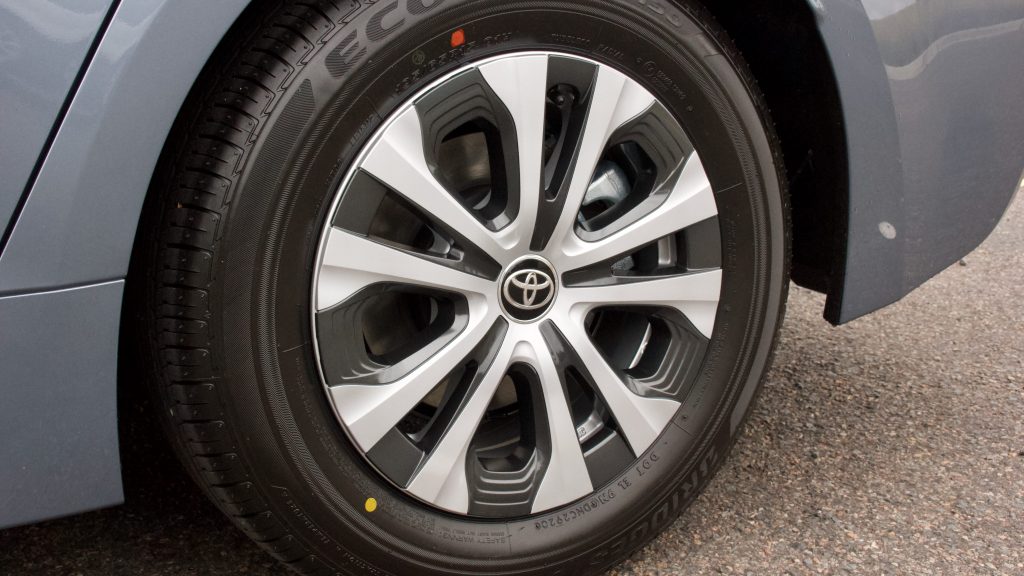
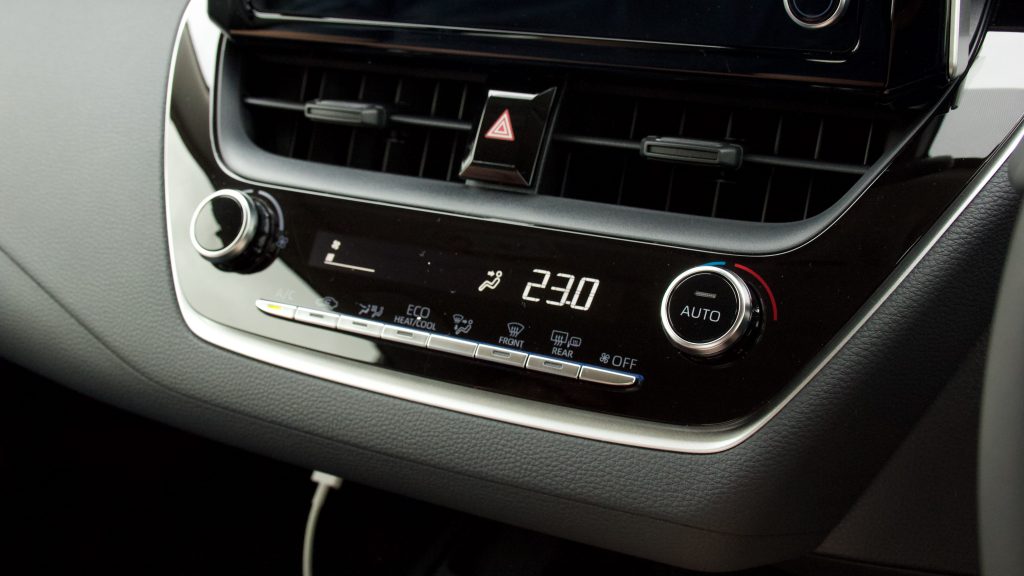
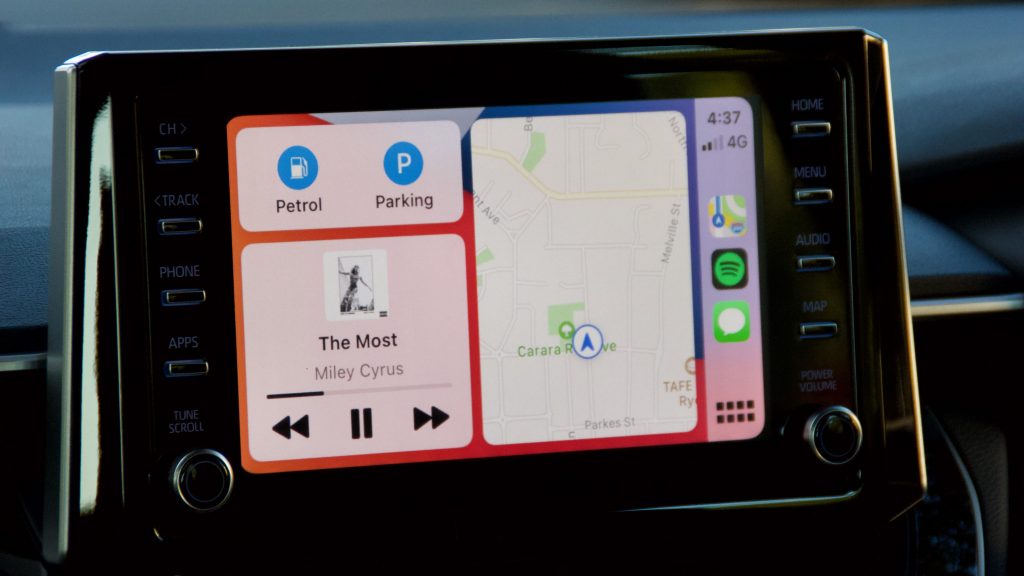
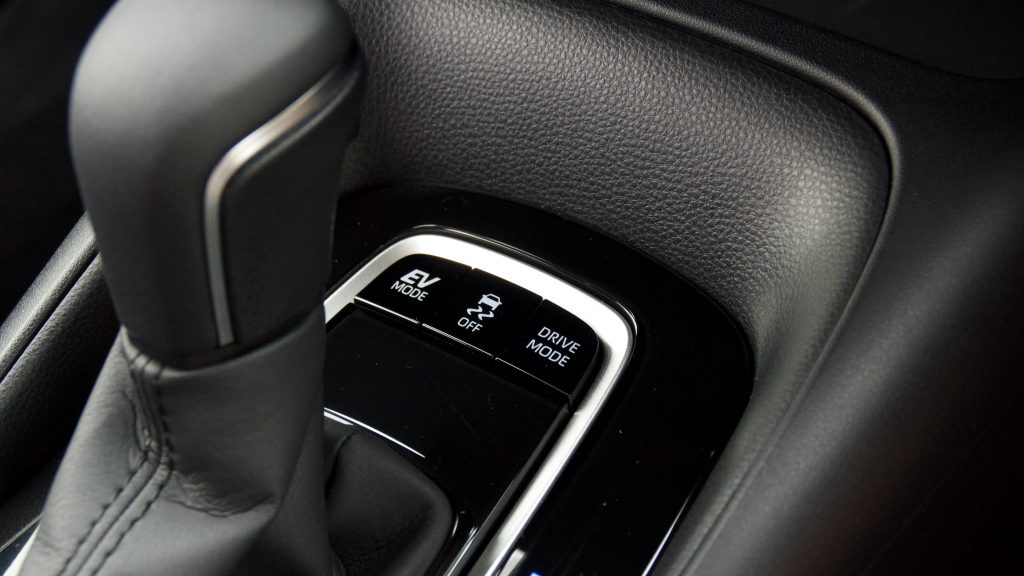
Our test car was the SX hybrid which swaps the SX petrol’s 16-inch alloy wheels for 195/65R15 alloys with aero covers for added efficiency and gains a 7.0-inch partially-digital driver’s display versus the petrol’s analogue gauges. On top of that it also gets blind-spot monitoring, a proximity key with push button start, single-zone climate control, a wireless phone charger, a ‘premium’ (artificial leather) steering wheel and gear knob, and cloth seats.
Choosing an SX Hybrid hatchback over the sedan strangely gets you front fog lights, front and rear parking sensors, LED rear indicators and reverse lights, dual-zone climate control and auto-folding mirrors, which are features no Corolla sedan gets in Australia.
Our car was finished in ‘Celestite Grey; for an extra $515, which adds up to a total of $35,045 drive away. That’s a lot when you consider it’s missing some very basic kit, including front or rear parking sensors. By comparison, a Mazda 3 G25 Evolve sedan presents a better finished interior, adds dual-zone climate, front and rear parking sensors with front and rear cross-traffic alert for $34,912 drive away. At least the Corolla sedan will offer you all its active safety gear across the range, whereas Honda will make you step up to the Civic RS sedan at $36,952 drive away for its ‘Honda Sensing’ active safety gear, though you still miss out on proper blind-spot monitoring, rear cross-traffic alert and so on.
Performance & Economy: 7.0/10
The 2020 Toyota Corolla uses Toyota’s familiar hybrid drivetrain comprising of a 1.8-litre four-cylinder petrol engine running the Atkinson cycle along with two electric motors. The total combined output is rated at 90kW, which is sent to the front wheels via an e-CVT transmission. This means that the wheels can be powered by the electric motors, the internal combustion engine or both – depending on the circumstances. Being a conventional hybrid, the battery is solely charged by the engine and regenerative braking rather than charging it at home.
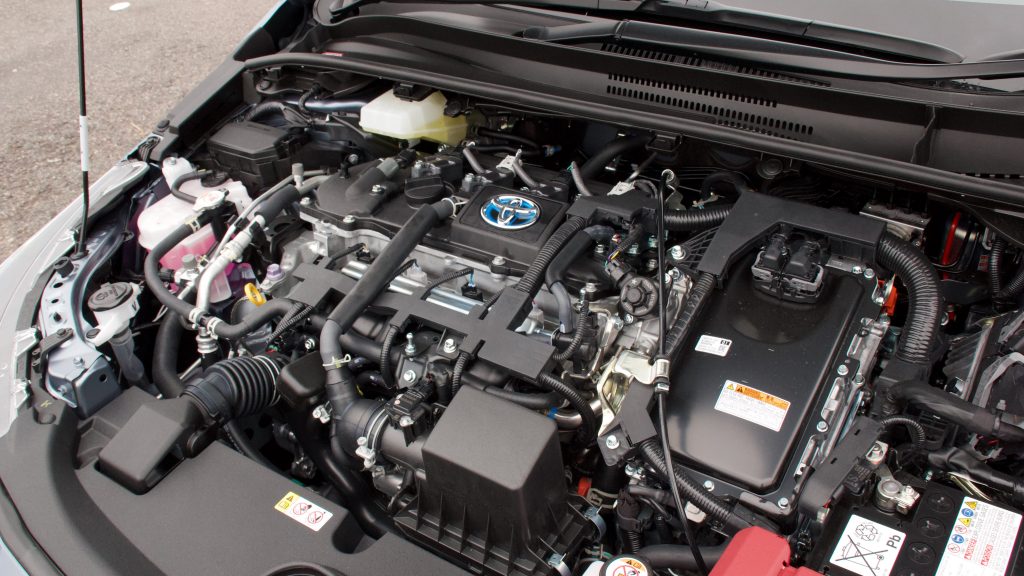
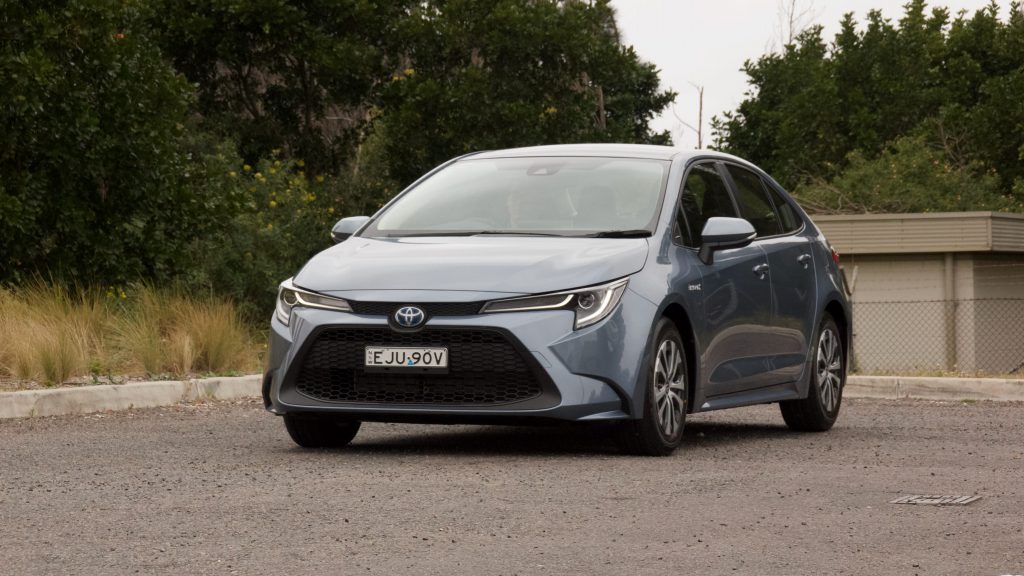
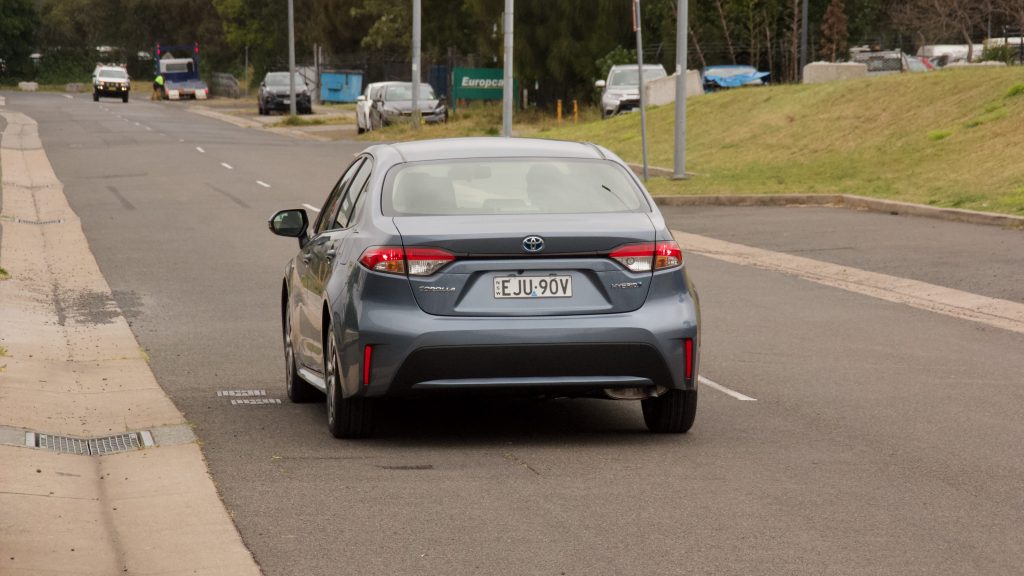
The hybrid drivetrain makes the 2020 Toyota Corolla perfectly suited to the heavy traffic and constant stopping that city driving brings with it, making for a soothing chariot. At lower speeds the petrol engine can spend a lot of time off, relying solely on the electric motors that deliver 100% of their torque from standstill. Even when the petrol engine is required for a bit more juice, it generally sits around 1,000-2,000rpm, depending on how much of a leadfoot you are.
“The hybrid drivetrain makes the Corolla perfectly suited to the heavy traffic and constant stopping that city driving brings with it, making for a soothing chariot.”
Take it out of the city and onto the open road and it’s a different story. Heavy acceleration and overtaking manoeuvres are met with spikes in revs but little in the way of pace. Where the hybrid feels peppy and effortless in town, it feels breathless and noisy anywhere north of 90km/h. The 0-100km/h sprint is dealt with in a leisurely 12.4 seconds. By comparison, the Corolla 2.0-litre petrol hits 100 in a much more spritely 9.3 seconds. It’s a shame that Australian’s aren’t offered a happy medium in terms of economy and performance with the 2.0-litre hybrid available on the Corolla overseas, which is good for 137kW and sprints to 100 in just 7.9 seconds.
At least the 1.8 hybrid makes up for its lack of go with fantastic economy. Officially, the hybrid sedan claims to use 3.5L/100km in mixed driving – which is even better than the smaller hatchback’s 4.2L/100km thanks to its slippery body. In the real world, hitting that figure poses a serious challenge. The obsession with economy even turned this rev head into an eco warrior, feathering the throttle to try and keep the car in EV mode for as long as possible and switching to B mode for maximum regeneration down hills. Despite our efforts, the lowest we could get over the week was 4.7L/100km. While that’s still an impressive figure, it is 34% higher than the claimed consumption.
“The obsession with economy even turned this rev head into an eco warrior, feathering the throttle to try and keep the car in EV mode for as long as possible and switching to B mode for maximum regeneration down hills.”
A Mazda 3 G25 Evolve provides a more engaging driving experience with its large 2.5-litre engine paired with a torque converter auto, while a Honda Civic sedan from the VTi-L spec and above provides low-down torque courtesy of its downsized 1.5-litre turbocharged engine. Neither can match the Corolla hybrid’s economy but, unless you spend majority of your time in the city, both will be better to drive for most people more of the time.
Ride & Handling: 9.0/10
Company car drivers can rejoice because the humble 2020 Toyota Corolla has reaped the benefits of Toyota’s renewed focus on fun-to-drive cars. The TNGA platform plays a huge part in reducing weight while increasing body rigidity and keeping the centre of gravity down low.
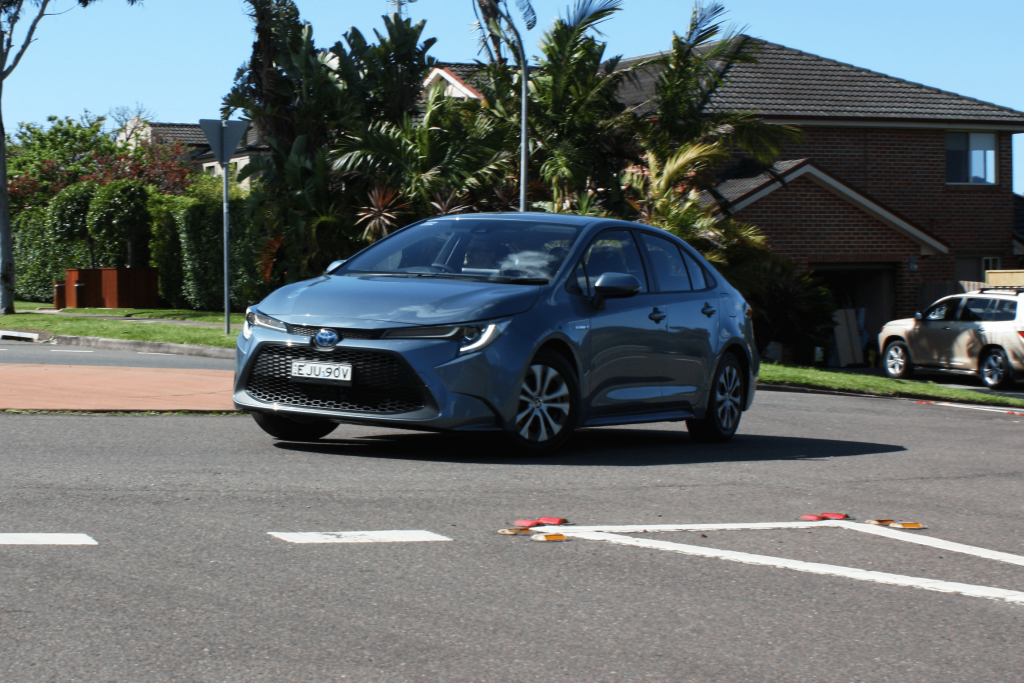
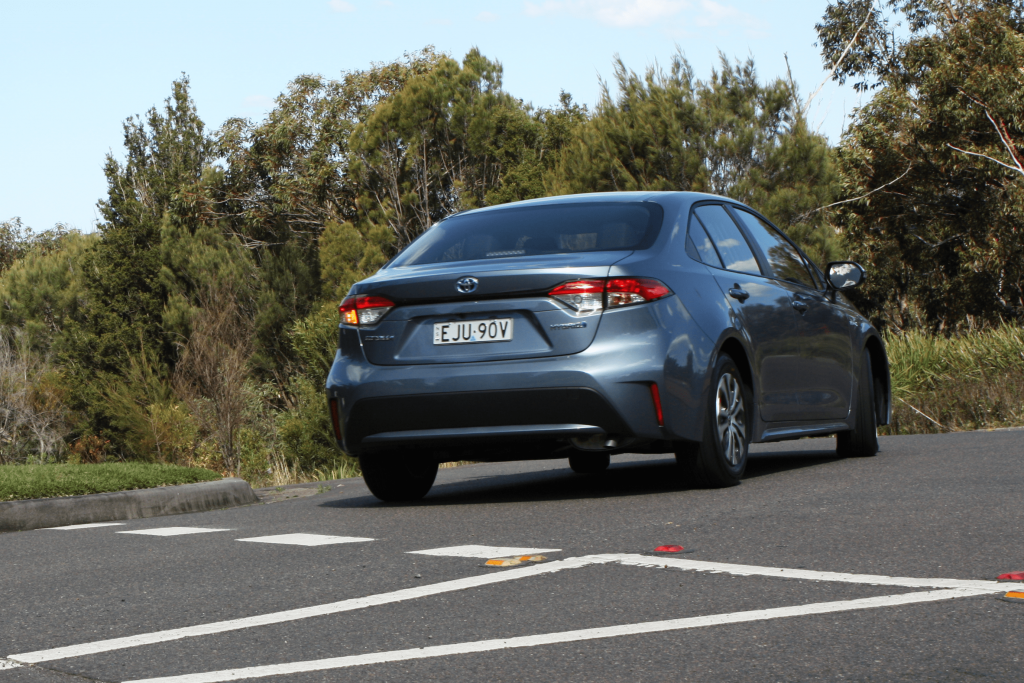
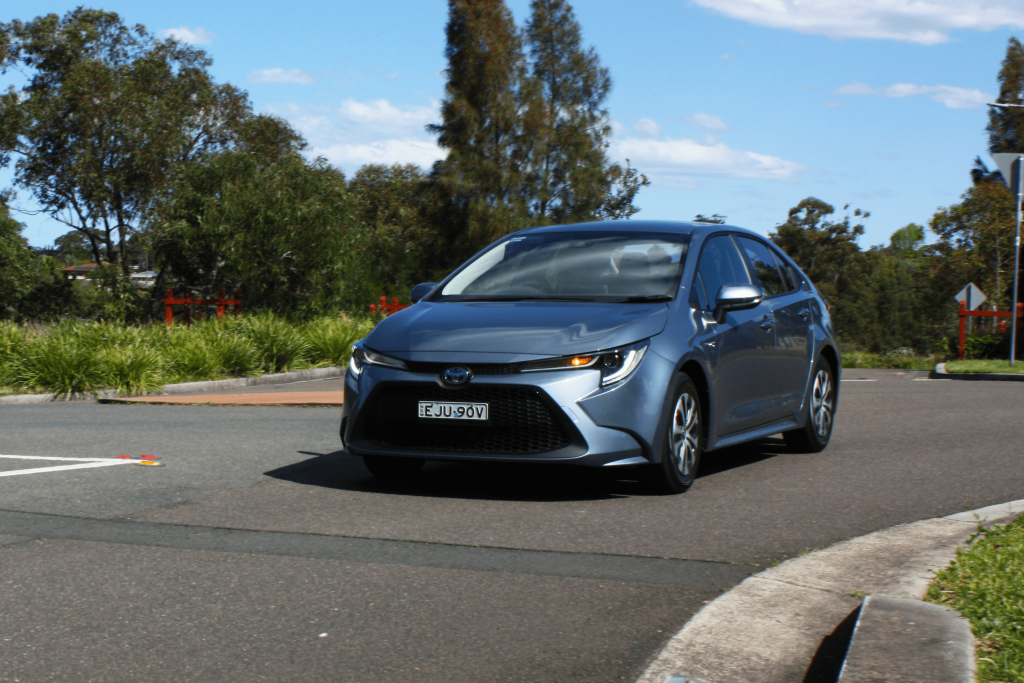
The humble hybrid rides with supreme comfort thanks to an excellent chassis setup with well-judged damping and a sophisticated multilink suspension setup at the rear rather than the standard-for-the-class torsion beam. Those skinny 15-inch alloys on eco tyres also play a big part in keeping road noise and sharp imperfections at bay.
“The humble hybrid rides with supreme comfort thanks to an excellent chassis setup with well-judged damping and a sophisticated multilink suspension setup at the rear…”
Shuffle the Corolla through some corners and it handles it with more poise than you would expect. The steering feels natural, giving you confidence when turning in. It feels pleasantly neutral and only starts to understeer when driving at speeds it was never intended for.
The Mazda 3 has actually taken a step back in terms of driving engagement due to limitations from its more basic torsion beam rear setup. Shockingly, the Corolla feels like it could give the Mazda a run for its money in the zoom zoom department. The excellent chassis further accentuates how badly we need that sportier hybrid… Or a GR Corolla.
Interior & Practicality: 7.5/10
The 2020 Toyota Corolla’s interior is rather attractive thanks to Toyota’s newfound focus on design and technology. The sedan’s interior design is carried over from the hatch, which means you get a dashboard that elegantly sweeps across with a tablet-style screen mounted on top. Material quality is mixed with a delightfully soft dash, a ‘premium’ wrapped steering wheel and gear knob and reasonably tactile switchgear. Move to the doors and the plastics revert to hard – even on the front doors. It’s a shame, because the sturdy and well-designed interior is let down in some areas by obvious cost cutting. What’s more annoying is that a ZR hatch has soft touch front doors, which adds a lot to the ambience.
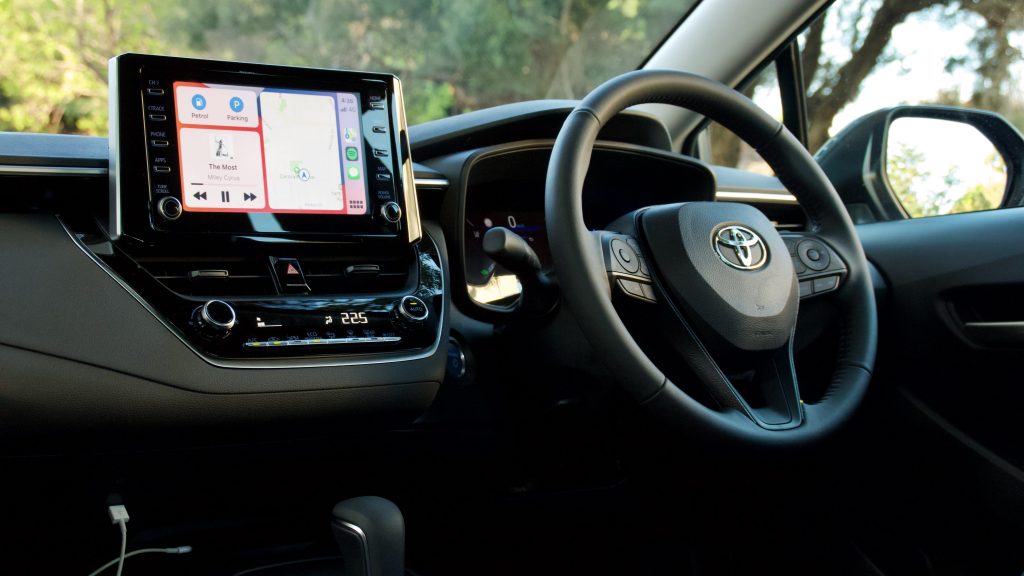
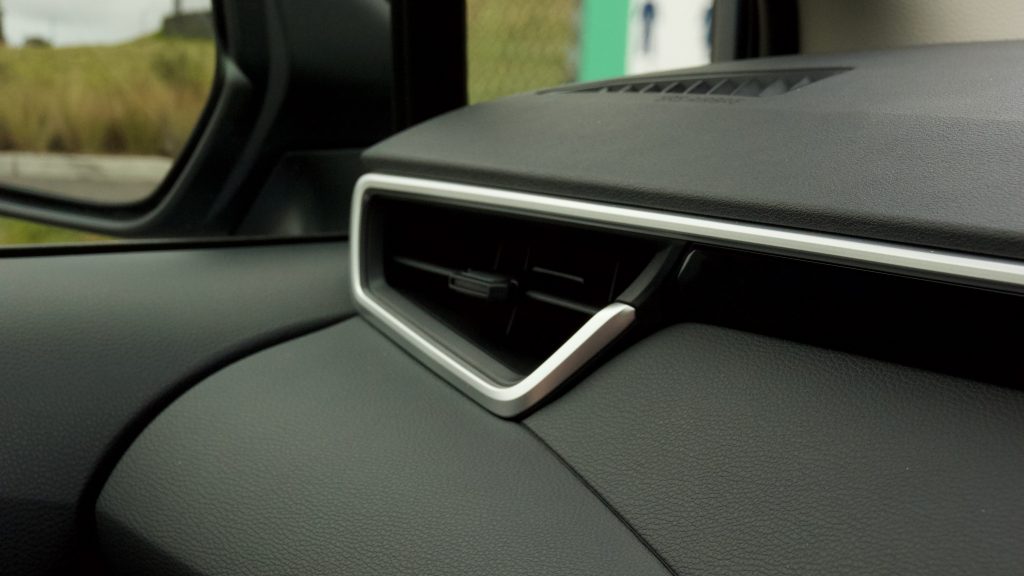
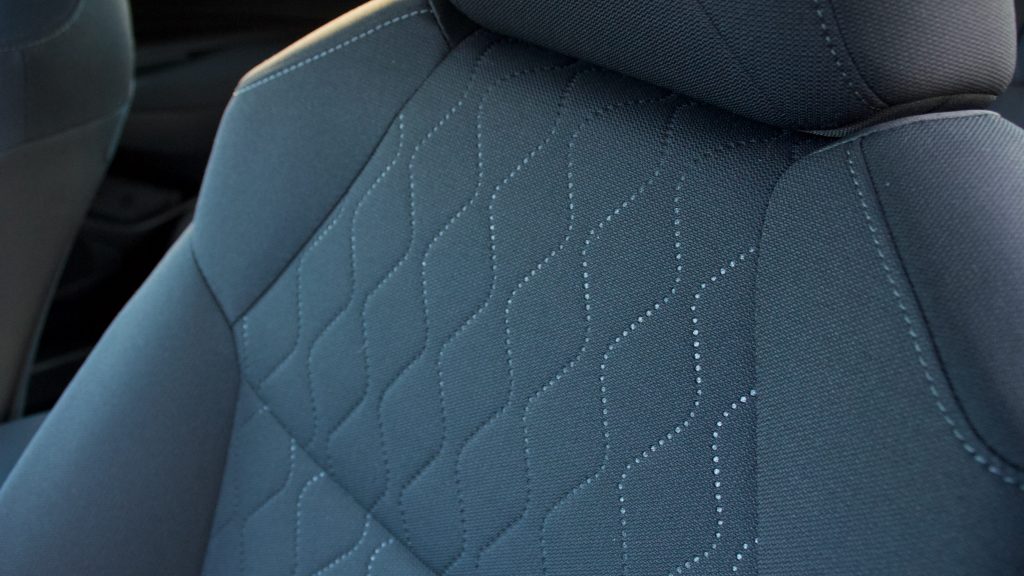
The tech is sorted with partially digital dials exclusive to the hybrid SX and (petrol only) ZR. Everything from digital speedo, economy and battery status are all easily access through this high-resolution and thorough 7.0-inch screen, which makes up for the lack of the ZR’s colour head-up display. The 8.0-inch infotainment touchscreen isn’t exactly as slick, looking cheaply integrated and the screen itself isn’t the highest resolution or brightest unit. The software is also rather clunky, with dull menus and a basic user interface. This is remedied by the availability of Apple CarPlay and Android Auto, meaning tech junkies will be able to stay connected and have all their apps at their fingertips.
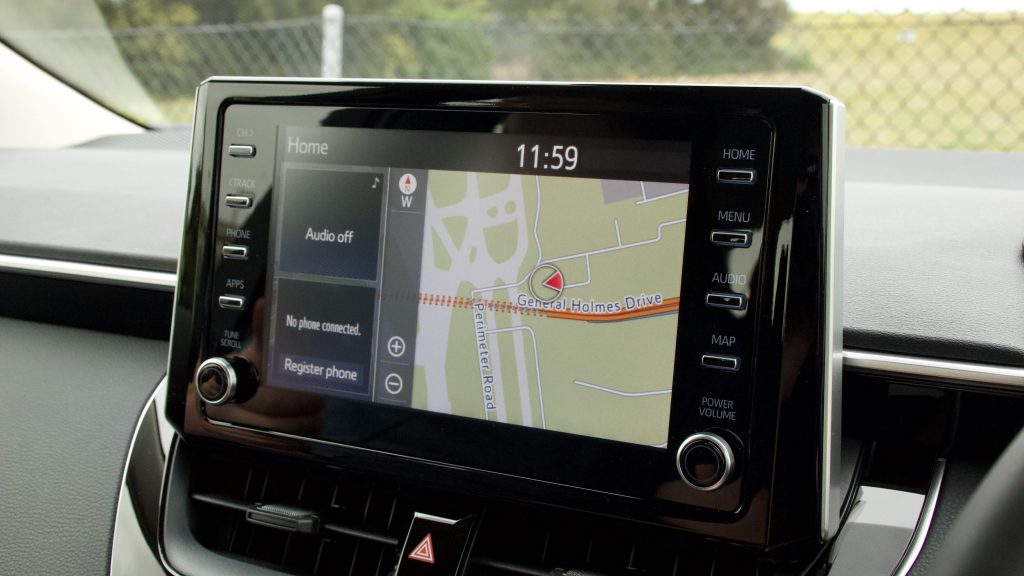
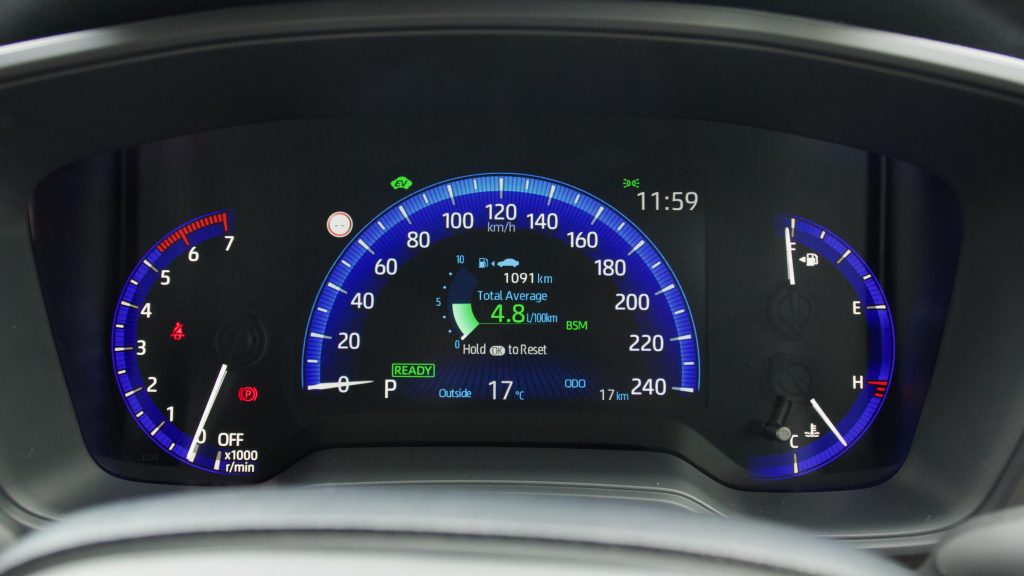
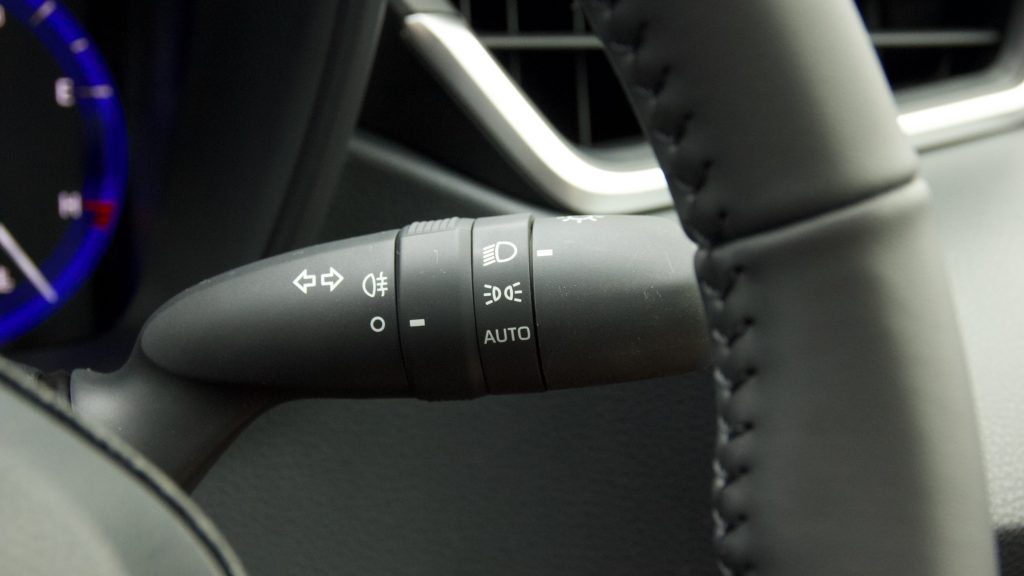
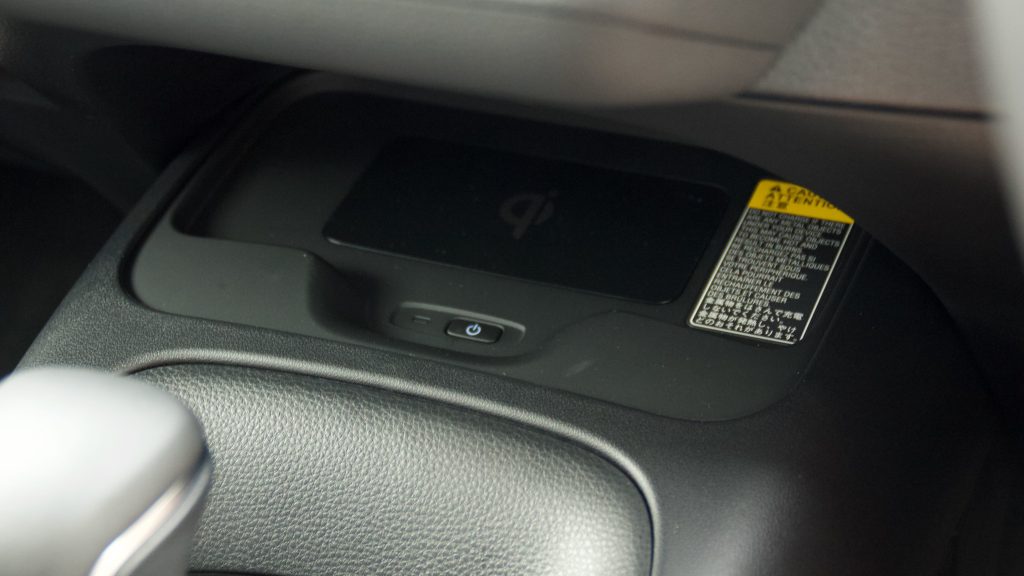
Storage is taken care of with a wireless phone charger up front (although it would be nice to have a seperate phone tray for those that choose to connect via USB), a small storage spot in the centre console, a decent glovebox and good-sized door bins. There are four cupholders in total – two up front and two in the rear centre armrest. The rear seats are spacious enough for two adults, thanks to the extra 60mm between the front and rear axle over the hatch, but the lack of rear vents is a bit stingy at this price point. Speaking of stingy, why does the Corolla sedan get single-zone climate instead of the hatchback’s dual-zone system?
“The rear seats are spacious enough for two adults, thanks to the extra 60mm between the front and rear axle over the hatch…”
Boot space is rated at 470L – a huge improvement on the hatchback’s shoebox of a boot – but offers no party tricks like shopping bag hooks or under-floor storage. The goose-neck hinges also don’t recess into designated cavities so you’ll need to be mindful of not crushing your luggage.
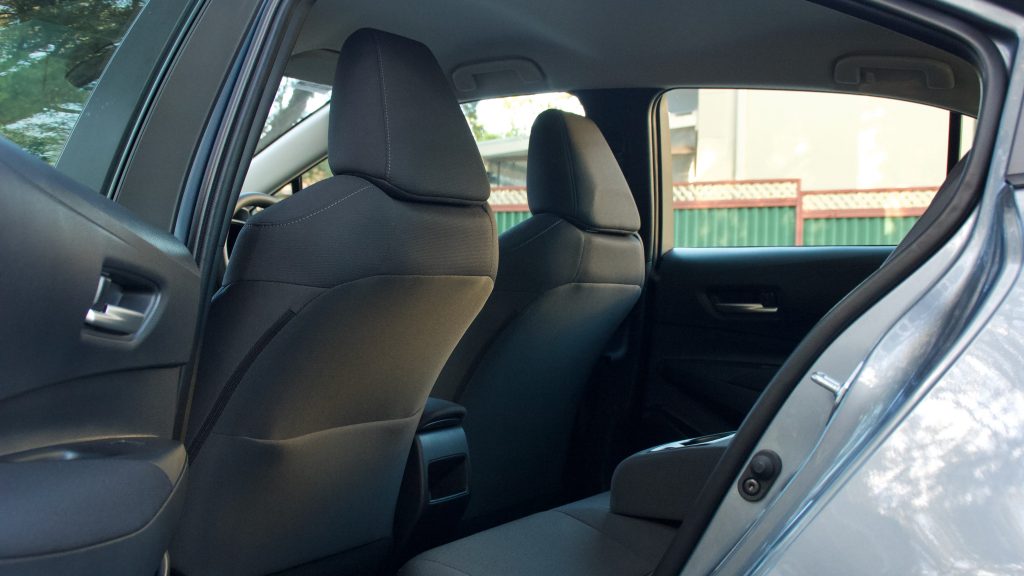
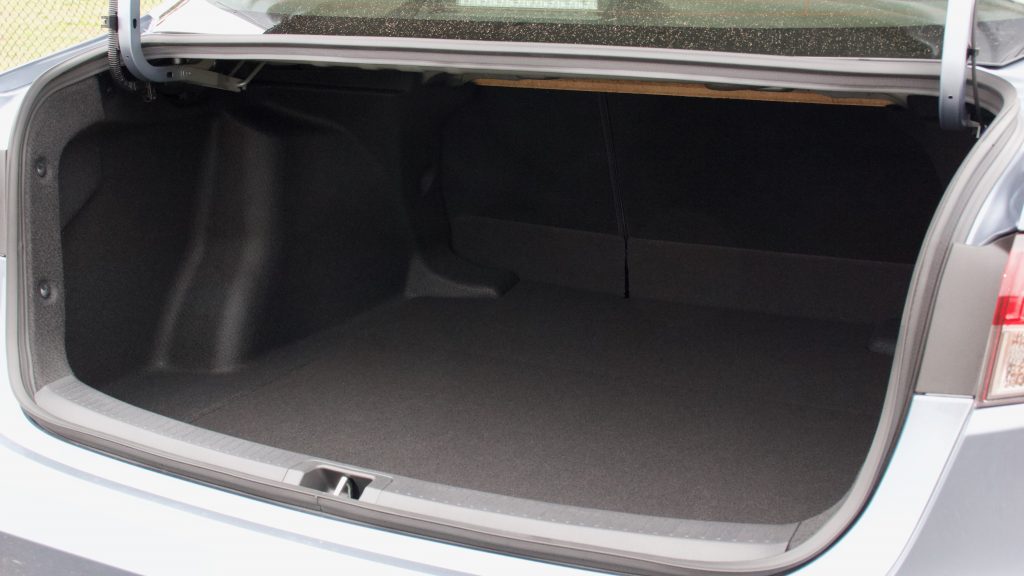
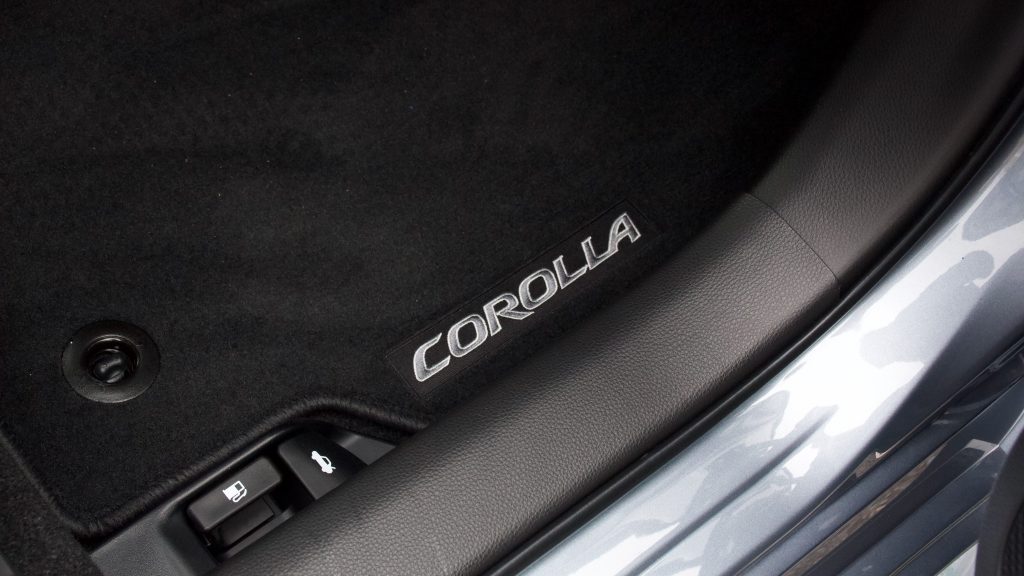
The Mazda 3’s interior offers a more premium design and finish across the range whereas the Corolla relies on the top-spec ZR for more soft touch materials. And while the Mazda 3 and Corolla sedan are similarly sized, the Honda Civic sedan is easily the largest car in terms of its rear accomodation and 525L boot.
Running Costs & Warranty: 10/10
This is why you buy a Toyota. Not only is it going to outlast humanity, but it’ll be cheap to service and never give you any headaches for as long as you have it. The 2020 Toyota Corolla is covered by a five-year and unlimited kilometre warranty for the car and the hybrid’s battery gets a further five years, for a total of 10 years as long as you follow your yearly maintenance.
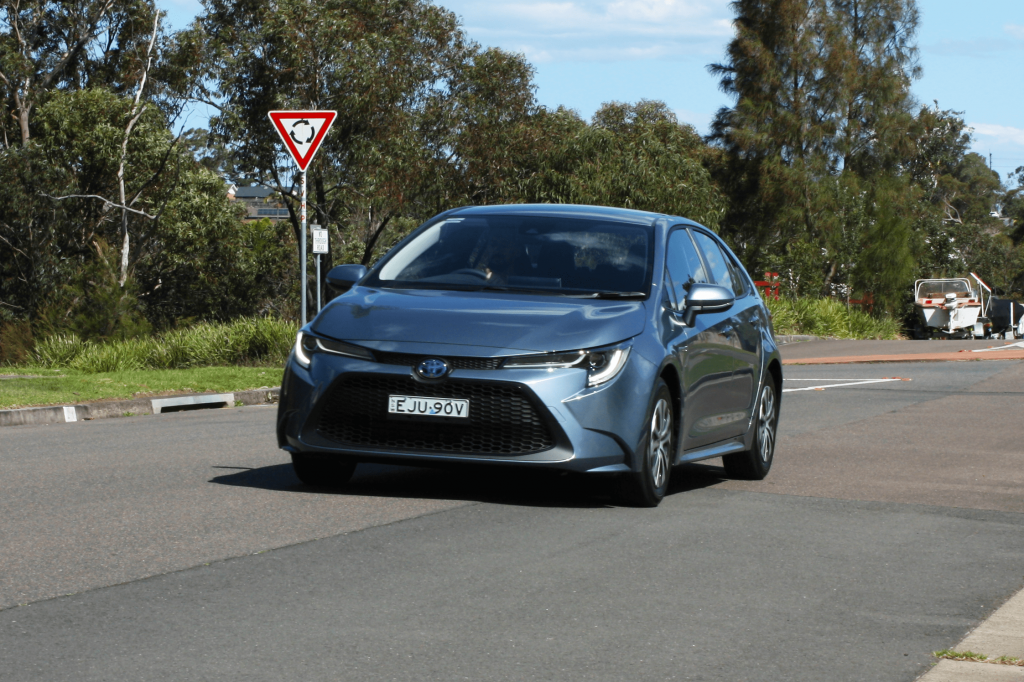
Following said maintenance shouldn’t be an issue either, with one of the strongest dealership networks in Australia. Servicing comes every 12 months or 15,000km – which is par for the course – but costs are capped at a very competitive $180 per service for the first four years. That means it’ll only cost you $540 for the first three years or 45,000km.
A Mazda 3 would cost $1,006 over three years and a Honda Civic would $891 in the same period. While those figures aren’t ludicrous, you can only cover up to 10,000km per year or you’ll be visiting the dealership more frequently and more costly to your wallet.
2020 Toyota Corolla SX Hybrid Sedan DiscoverAuto Rating: 8.1/10
The 2020 Toyota Corolla hybrid sedan goes a long way to righting a lot of the hatchback’s wrongs in terms of interior space and versatility without sacrificing substance and style. Shocking, I know.
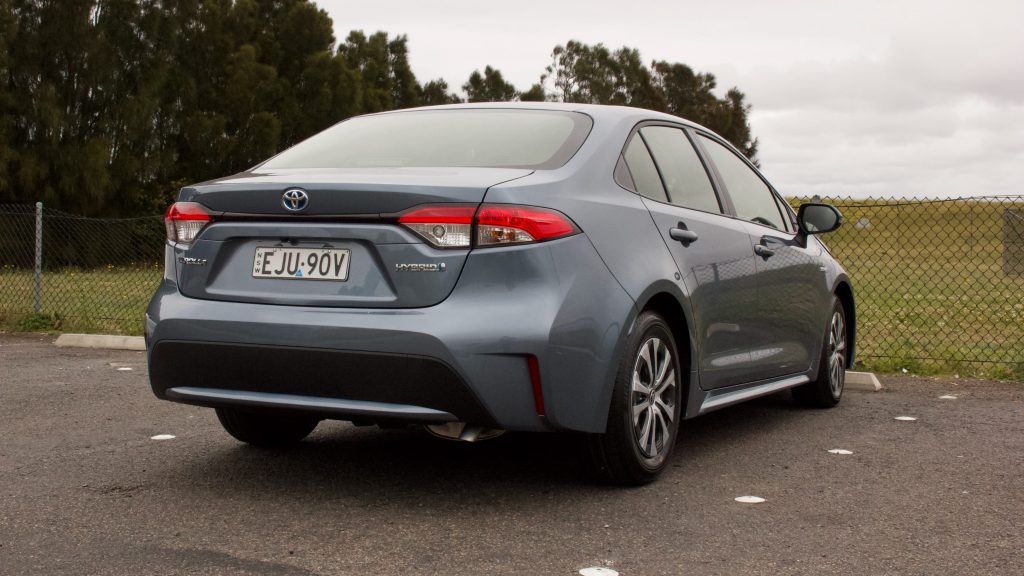
It might not have the most thrilling powertrain (pretty please bring the 2.0-litre hybrid to Australia, Toyota!) and it might struggle to reach its claimed economy figure when driven in a realistic manner, but it offers a seriously complete package for frugal families or those who plan to do a lot of ride sharing. While other competitors might be better suited for driving enthusiasts, the Corolla sedan is a safe, comfortable, easy to drive and – especially as a hybrid – economical car that will cost you nothing to run.
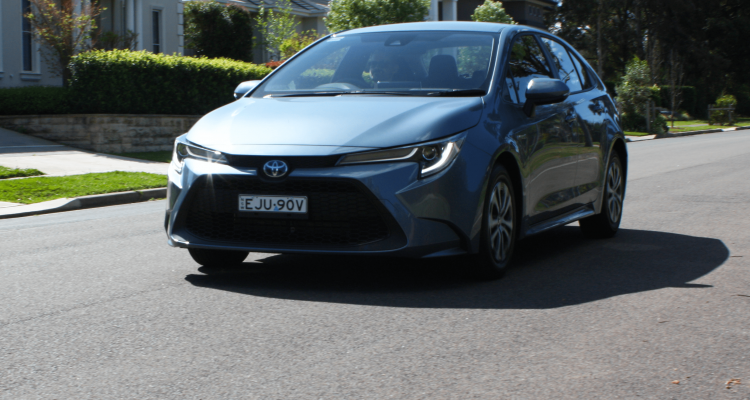
Leave a Reply